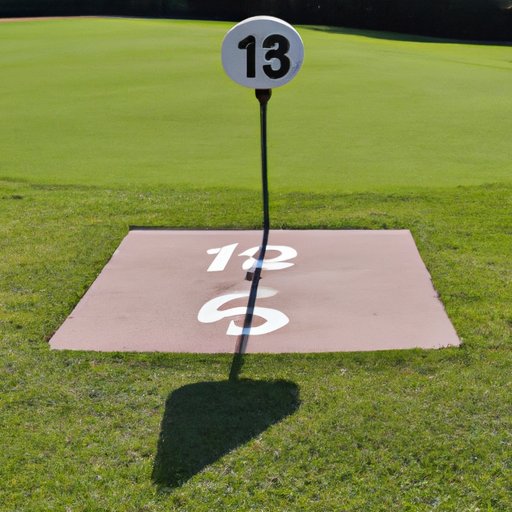Introduction
Golf is a sport enjoyed by people of all ages and skill levels. The handicap system was created to even out the playing field, allowing golfers of all abilities to compete against each other in a fair and balanced manner. But what exactly is a handicap, and how does it work? In this article, we’ll explore the definition of handicaps in golf, the rules and regulations that govern them, and how they can be used to level the playing field and improve your game.
What is a Handicap in Golf?
A handicap in golf is a numerical representation of a golfer’s skill level. It is calculated using a formula based on a player’s average score over a series of rounds played on different courses. The lower the handicap number, the better the golfer’s average score. A scratch golfer, for example, has a handicap of zero. A recreational golfer may have a higher handicap, ranging from 1-20.
How Are Handicaps Calculated?
The handicap calculation is based on a golfer’s 10 best scores (out of the last 20 rounds played). The average of these 10 scores is then multiplied by 0.96 to determine the golfer’s handicap. This number is then adjusted depending on the difficulty of the course. For example, if a course is more difficult than the average course, the golfer’s handicap will be adjusted upwards. Conversely, if the course is easier than the average, the golfer’s handicap will be adjusted downwards.
How Do Handicaps Help Level the Playing Field?
Handicaps are designed to even out the playing field so that golfers of all abilities can compete against each other. For example, let’s say two players are competing against each other in a match. Player A has a handicap of 10 and Player B has a handicap of 20. To make the competition more even, Player B is given a stroke advantage of 10 strokes. This means that Player A must complete the course in 10 fewer shots than Player B in order to win the match. This is just one example of how handicaps help level the playing field in golf.
How Can Handicaps Help Improve Your Game?
Having a handicap in golf can be beneficial in many ways. It can help you track your progress over time and identify areas where you need to improve. It also gives you a goal to strive for, as you try to lower your handicap and become a better golfer. Additionally, having a handicap can help you find opponents of similar skill levels, so you can compete against players who are at your level.
The Impact of Handicaps on Competitive Play
Handicaps can also be used in competitive play, such as tournaments and leagues. Professional golfers often use their handicaps to gain an edge over their opponents. By understanding the strengths and weaknesses of their opponents, they can use strategic shot selection and course management to maximize their chances of winning. On the flip side, some players find that having a handicap can be a disadvantage in competitive play, as it limits their ability to take risks and be aggressive.
Conclusion
Handicaps in golf can be a great way to level the playing field and allow players of all skill levels to compete against each other. By calculating your handicap, you can track your progress over time and set goals to become a better golfer. Handicaps can also help you find opponents of similar skill levels and give you an edge in competitive play. With the right approach and a little bit of luck, handicaps can help you take your game to the next level.


